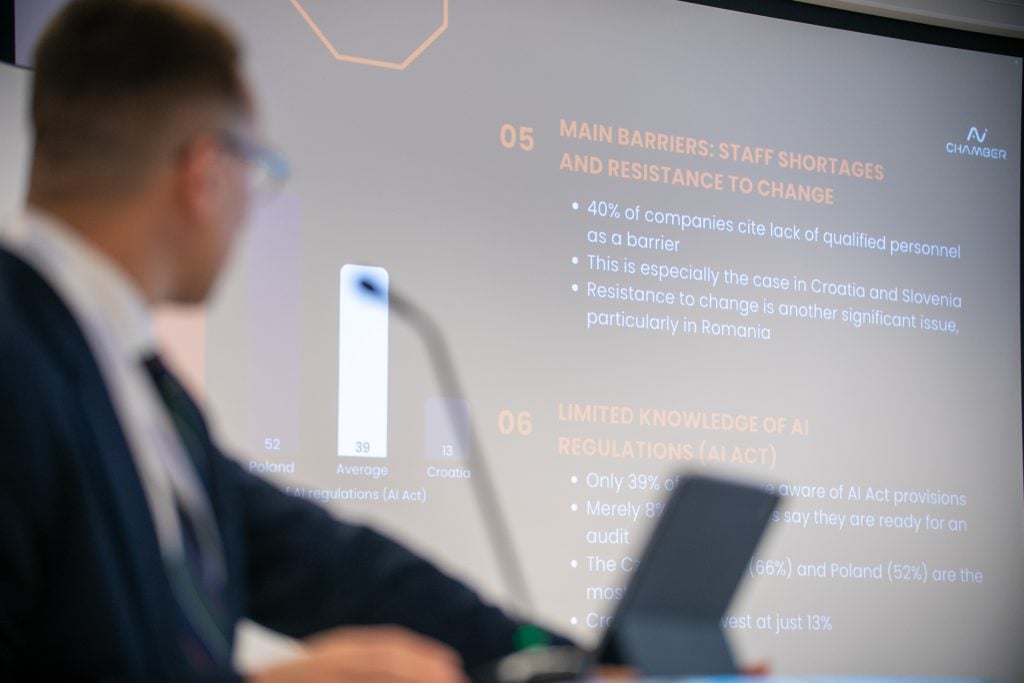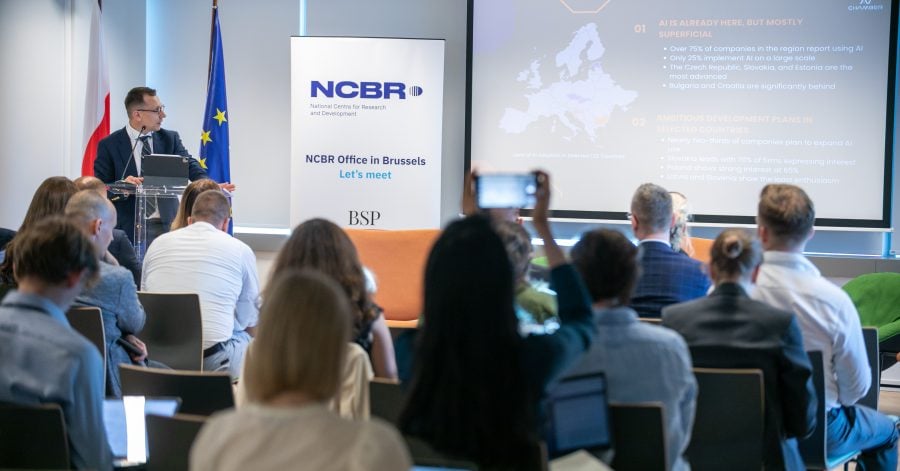A new report by the AI Chamber, based on insights from more than 3,200 small and medium-sized enterprises (SMEs) across Central and Eastern Europe (CEE), paints a striking picture of the region’s AI readiness: while over 75% of businesses say they are using artificial intelligence, only 25% are doing so at scale.
Titled “How Do SMEs in CEE Find Their Way in the World of AI?”, the study maps out how AI is reshaping operational workflows across 11 CEE countries – but also where gaps in leadership, talent, and regulatory awareness are holding many companies back.
The report uncovers four dominant mindsets shaping AI readiness in the region: Practical Optimists, Aware with Barriers, AI Indifferent, and Digitally Withdrawn. These categories reflect more than technological maturity – they reveal how vision, organizational structure, and risk appetite determine success or stagnation.
“This report challenges the prevailing myth that AI adoption is simply a matter of access to technology. The decisive factor is organizational maturity – leadership clarity, talent readiness, and strategic intent,” says Tomasz Snażyk, CEO of the AI Chamber.
“CEE’s SMEs could become global frontrunners in applied AI – if supported by the right regulatory frameworks and education initiatives. The opportunity is real. So is the risk of being left behind.”

Practical applications dominate, but strategic use remains rare
According to the report, the top three use cases of AI among SMEs in the region are data analysis (40%), automatic translation (35%), and task automation (28%) – indicating a focus on efficiency rather than transformation. More advanced applications like predictive analytics or AI-enhanced product development are far less common.
Notably, Estonia and Poland show more mature use cases, particularly in areas like customer behavior tracking and forecasting – suggesting that a small but growing cohort of regional players are moving beyond basic AI adoption into more data-driven decision-making.
However, only 8% of all SMEs surveyed are ready for an upcoming AI audit – a key requirement under the EU AI Act. In fact, just 39% of AI-using companies report even being familiar with the legislation, dropping to 29% among smaller and lower-tech firms.
Size matters – and so does vision
The data highlights a strong correlation between company size and AI maturity. SMEs with between 50–250 employees are far more likely to use AI strategically, have regulatory awareness, and invest in upskilling their teams. At the opposite end, micro-enterprises (under 10 employees) often lack the capacity, leadership bandwidth, or digital talent to take full advantage of AI opportunities.
Encouragingly, 61% of employees across the region are actively experimenting with AI tools in their day-to-day work. This bottom-up momentum is strongest in Poland and the Czech Republic, pointing to a grassroots wave of innovation that could help close the readiness gap – if matched by investment from leadership.
Still, one in four firms has taken no steps to upskill their workforce in AI-related competencies. That training gap is a red flag for policymakers, particularly as generative AI continues to reshape white-collar industries.

Fragmented AI landscape across CEE
Perhaps the most urgent takeaway from the report is the stark digital divide within CEE itself.
- Estonia emerges as the clear frontrunner, with 67% of companies reporting a positive AI impact and 65% familiar with the EU’s AI Act. Estonian firms also report among the lowest internal barriers to implementation, thanks to strong digital governance and high awareness.
- Slovakia and Poland also rank high in AI ambition: 70% and 65% of SMEs, respectively, want to expand their use of AI in the near future.
- In contrast, Croatia, Latvia, and Bulgaria show significantly lower levels of adoption and readiness. In Croatia, nearly a third of SMEs express no interest in using AI at all, while in Bulgaria, over half cite a lack of knowledge as a major barrier.
Even within high-growth markets like Poland, the ambition-execution gap is visible. While over half of SMEs there see AI as a competitive advantage, 35% report no current intent to adopt it, despite employee enthusiasm.
Regional crossroads
The timing of the report is critical. As global investment in AI is projected to soar from $189 billion in 2023 to $4.8 trillion by 2033 (UNCTAD), the world’s economic power centers are already shifting. More than 60% of AI patents and R&D funding are now concentrated in the U.S. and China, putting pressure on Europe—and CEE in particular – to define its AI trajectory.
For the AI Chamber, this moment represents both a risk and an opportunity.
“The window for CEE to define its digital future is open – but not indefinitely. The question facing governments, investors, and SMEs alike is no longer whether to embrace AI, but how quickly, how safely, and how strategically it can be done – before the gap with global leaders becomes irreversible.” – concludes Tomasz Snażyk.
Download the Full Report
👉 aichamber.eu/report/how-do-smes-in-cee-find-their-way-in-the-world-of-ai








